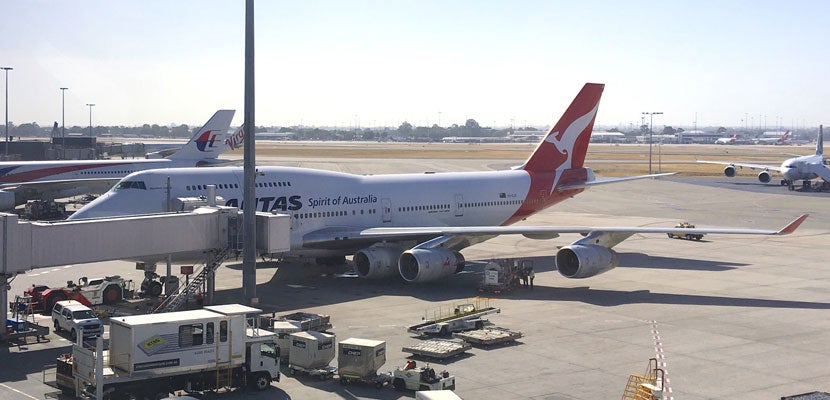Watch a Qantas 747 Fly with Five Engines
A five-engined Qantas Boeing 747-400? That's what TPG Special Correspondent John Walton stumbled upon when on a tour of Perth Airport in Australia. He explains…
"Aw, mate, the jumbo sure is a beautiful plane… hey wait, what's that strapped under its wing?!"
Entirely coincidentally, I was on a tour of Perth Airport when I overheard someone peering out a terminal window saying just that. I remembered that Qantas was ferrying an engine from Sydney to Johannesburg, and realized that this must be the same flight, and may have squeaked slightly with excitement.
It's not every day — or even every year — you see a 747 ferrying an extra engine underneath its wing. The last time Qantas did so was 2011.
Qantas outlines what's going on: "The 747 has the ability to carry a fifth engine, fitted between the body of the aircraft and the inner-most engine on the port (left) side of the aircraft. The extra engine isn't powered up for the flight — we're essentially ferrying across a very large spare part from our engineering HQ in Sydney so it can be fitted to one of our other Boeing 747s in Johannesburg. We're undertaking this rare task to get our customers and our aircraft on their way as quickly as possible — rather than shipping the engine across by boat or chartering a freighter aircraft."
Earlier aircraft (with less reliable engines) like the Boeing 707 also had the ability to have an extra engine podded under the wing, and when the 747's engines were developed in the 1960s it was pretty clear that very few existing cargo aircraft would be able to hold them. Instead, Qantas says, "the wing of the aircraft is fitted with anchor points, which allows a supporting strut to be attached under the wing. The strut is fitted with a winching mechanism so the engine can be hoisted up and secured safely for its journey."
But why was the Sydney-Jo'burg flight on the ground in Western Australia? "The fifth engine adds extra weight and drag to the aircraft, meaning today's flight had to make a quick refueling stop in Perth," Qantas says. It's a couple of hours' delay for passengers because of the refueling required.
The folks at Perth Airport very kindly offered to detour our airfield tour around the 747 and spend a few minutes up at the far end of the runway to watch the 747 take off.
It really was a bizarre sight to see the 747 with an additional engine under its wing, but the big bird lifted off as normal, roaring into the sky for the trans-Indian Ocean flight to Johannesburg.

